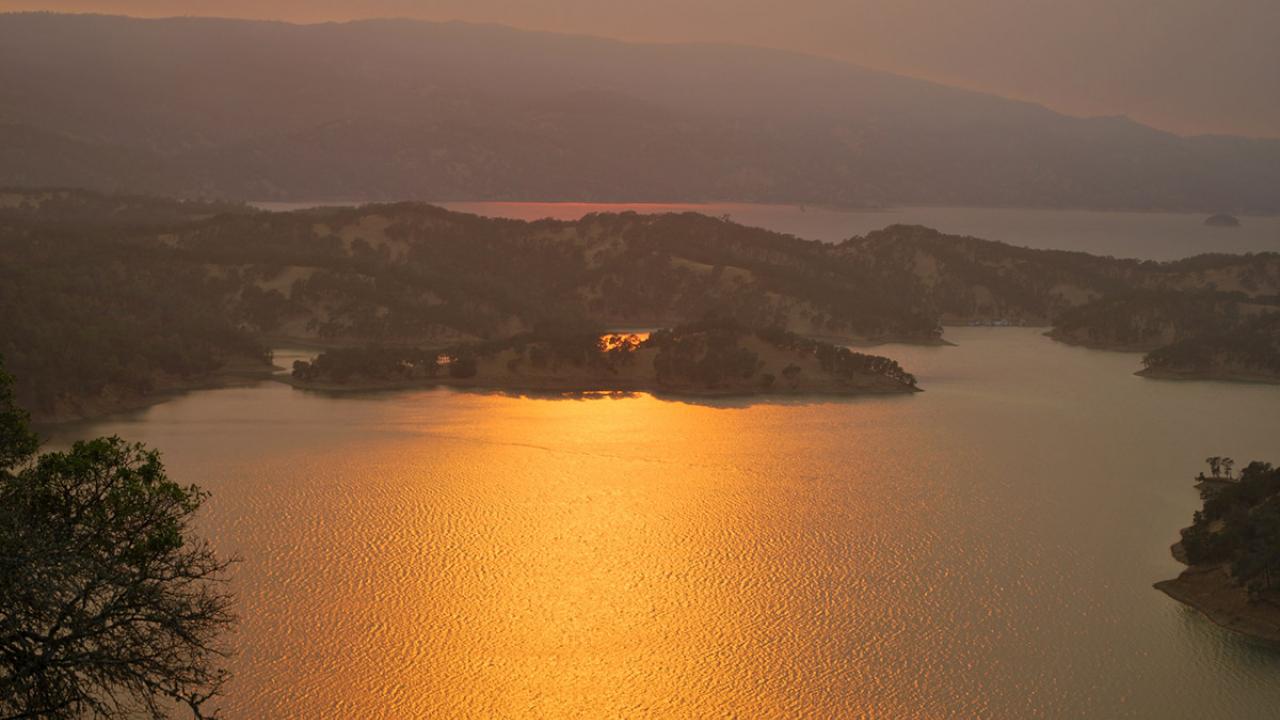The sky has cleared around several UC Davis natural reserves after they spent several days in the shadow of the County Fire.
“Crystal-clear at Cahill today,” due to the wind, reserve steward Paul Havemann said Monday (July 9). He works at Stebbins Cold Canyon Natural Reserve near the Cahill Riparian Reserve.
The County Fire sparked June 30 near Guinda and prompted evacuations of researchers from Stebbins and Quail Creek Natural Reserve. The blaze had covered 90,000 acres and been 80 percent contained as of this morning (July 10), Cal Fire reported.
On the day it broke out, the UC Davis Fire Department was among the first to respond, sending a team of three on Brush Truck 34 to attack the then-350-acre fire. They were quickly replaced by firefighters from across the state.
The School of Veterinary Medicine also sprang into action, with its Veterinary Emergency Response Team, or VERT, standing by to assist with animal evacuations. Faculty and students made visits to the fire command center in Woodland, helping to set up a small animal shelter and attending briefings.
In the intervening days, researchers have been allowed to return to the reserve sites, and popular hiking trails reopened Friday at Stebbins Cold Canyon.
“Fortunately, the County Fire has been contained by Cal Fire crews north of Putah Creek and Highway 128,” reserve staff posted on the Stebbins Cold Canyon website. “Cal Fire very successfully used backfires from the highway and the lake to remove fuels in the southerly path of the fire. Neither Stebbins Cold Canyon nor Quail Ridge reserves were reached by the fire, though both were evacuated as a precaution.”
Precautions were added after last major fire
This isn’t the first wildfire that has threatened the reserves recently. Stebbins was closed for a year after the Wragg Fire tore through in 2015.
In response to that fire, the UC Davis Natural Reserve System started preparing for the next disaster — building helicopter landing pads atop Stebbins Cold Canyon ridges, for example. Also, the system added mile markers to hiking trails there so visitors can give more precise locations to first responders in the case of an emergency.
“We have invested a lot more effort in communicating hazards (and especially, hazard avoidance) to keep hikers out of dangerous situations,” said Jeffrey Clary, associate director of the natural reserve system. “Regular postings on the website with links to fire conditions are an example.”
And, when fire approaches, the reserves are quick to protect people and research materials. During the County Fire, McLaughlin Natural Reserve staff mowed around key weather equipment and removed plastic tubes from around small plants in a creek restoration area, so that heat wouldn't "shrink-wrap" them and cause further damage. Quail Ridge staff moved irreplaceable research materials to campus for safe-keeping and evacuated visiting New Mexico State University students who had come to study deer mice.
Reserve staff offered their homes up to the visiting students since they didn’t have anywhere else to stay locally. “We (had) our roll-out mattresses ready to go at our homes in the valley,” Clary said.
The visiting students instead opted to wait out the fire with some sightseeing elsewhere in the region.
They can now get back to work.
